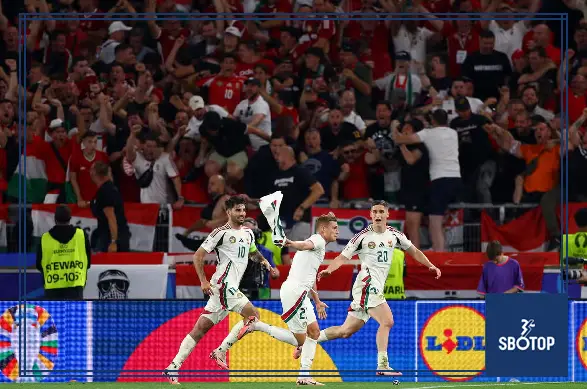In a riveting international friendly, Scotland showcased their prowess in ball possession, asserting control from the early moments of the game. Despite their dominance in maintaining possession, it was Hungary who appeared more menacing in the attacking third, posing a constant threat to Scotland’s defense. However, their efforts rarely culminated in direct challenges to Scotland’s goalkeeper, Angus Gunn. The match’s most significant moment of danger for Scotland materialized just before the halftime whistle, highlighting Hungary’s ability to capitalize on set-piece opportunities.
From the onset, Scotland’s strategy was clear: maintain possession and build up play patiently. The Scottish midfield, anchored by experienced playmakers, orchestrated a series of intricate passing sequences, effectively dictating the game’s tempo. UAFA EURO 2024 Hungary, on the other hand, opted for a more pragmatic approach, focusing on defensive solidity and quick transitions. This tactical dichotomy set the stage for an intriguing contest between Scotland’s methodical possession and Hungary’s incisive counterattacks.
As Scotland enjoyed the lion’s share of possession, their backline often found themselves positioned high up the pitch, attempting to suffocate any Hungarian efforts to break free championship league. This high defensive line, while effective in maintaining pressure, left them vulnerable to swift counterattacks. Hungary, recognizing this potential weakness, patiently awaited opportunities to exploit the space behind the Scottish defenders.
Midway through the first half, Hungary’s counterattacking intent began to bear fruit. Dominik Szoboszlai, Hungary’s creative fulcrum, orchestrated several rapid transitions, utilizing his vision and precision passing to launch his teammates into promising positions. Despite these efforts, Hungary struggled to deliver the final blow, with Angus Gunn seldom called into action. Nonetheless, their persistent probing ensured that Scotland’s defense could never afford to relax.
The pivotal moment of the first half arrived in the 44th minute. Hungary won a free-kick in a dangerous area, setting the stage for Szoboszlai’s set-piece expertise. As the Scottish defenders organized themselves, anticipation filled the air. Szoboszlai delivered a curling ball into the box, met by the towering presence of Willi Orbán. Orbán’s header, executed with precision, seemed destined for the net. The ball, however, had other plans. It glanced off the crossbar, a hair’s breadth away from breaking the deadlock. Scotland breathed a collective sigh of relief as the halftime whistle followed shortly after.
This near-miss served as a stark reminder of Hungary’s potency in set-piece situations and the fine margins that often separate victory from frustration in football. For Scotland, it was a wake-up call, underscoring the need for heightened vigilance despite their control over possession. The Scottish coaching staff likely emphasized this point during the halftime team talk, aware that their dominance on the ball would count for little if Hungary capitalized on one of their sporadic opportunities.
As the second half commenced, Scotland continued to dominate possession, but with a renewed sense of caution. They focused on tightening their defensive shape and minimizing the risks associated with high defensive positioning. Hungary, emboldened by their near-success before the break, maintained their counterattacking approach, hoping to exploit any lapses in the Scottish defense.
The match progressed with both teams demonstrating their tactical acumen and determination. Scotland’s possession play, while aesthetically pleasing, struggled to penetrate Hungary’s disciplined defensive lines. Meanwhile, Hungary’s counterattacks, orchestrated primarily by Szoboszlai, continued to pose sporadic threats, ensuring a tense and evenly matched contest.
In the end, the match concluded with both teams unable to find the back of the net, resulting in a hard-fought draw. Scotland’s dominance in possession was counterbalanced by Hungary’s defensive resilience and counterattacking prowess. The encounter highlighted the complex dynamics of football, where control of the ball does not always equate to control of the game. For Hungary, the performance was a testament to their tactical discipline and ability to create moments of danger even when on the back foot. Scotland, meanwhile, would need to reflect on converting possession into tangible goal-scoring opportunities in future matches.
Also read:








